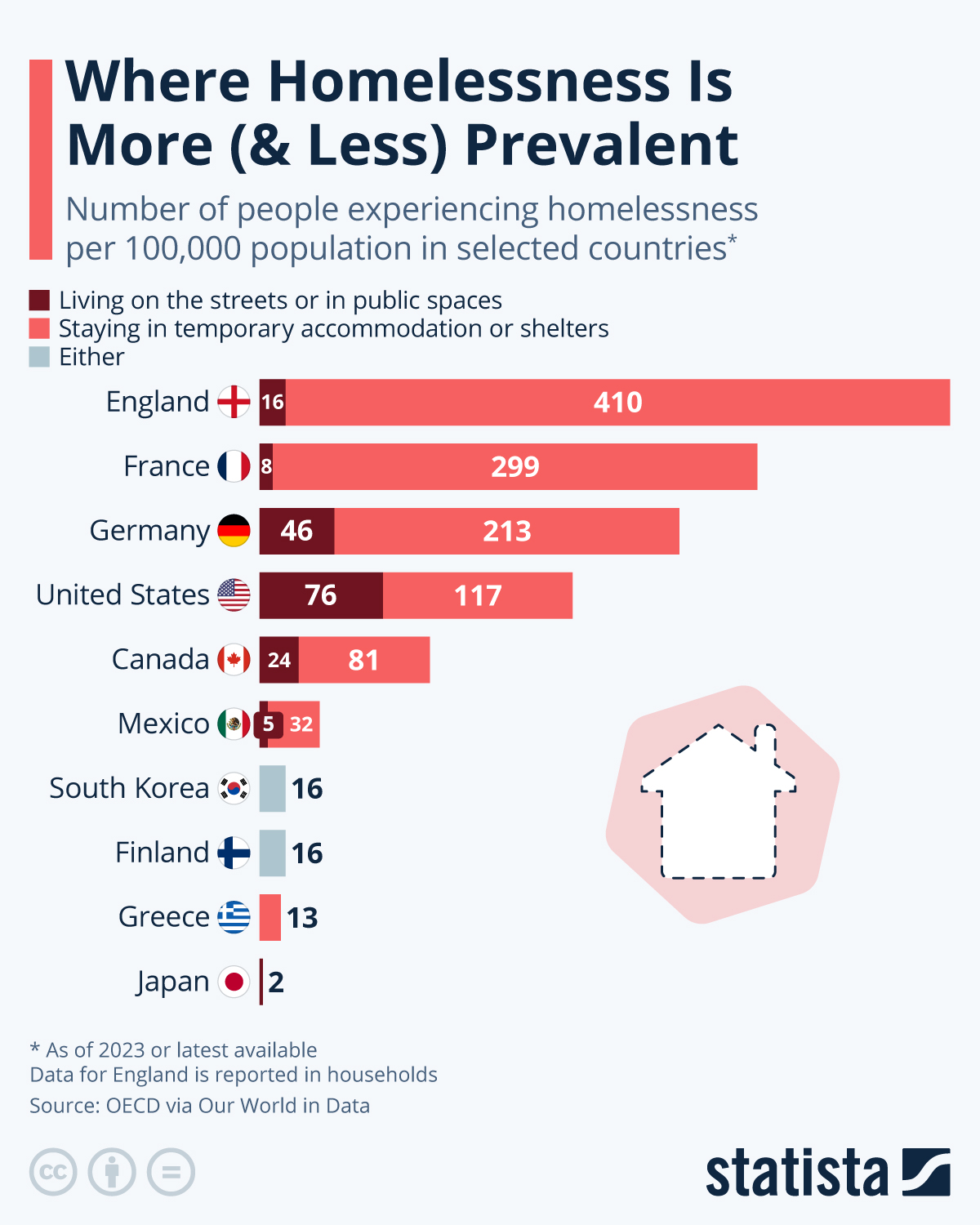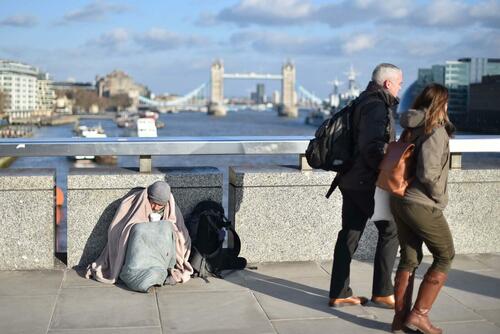Where Homelessness Is More (& Less) Prevalent
At least 330 million people face absolute homelessness today, according to the Institute of Global Homelessness.
This means hundreds of millions of people are living without access to any kind of shelter. While homelessness is tough to track precisely on a global scale, and spans various forms including sleeping rough and residing in temporarily housed emergency shelters, the number of those experiencing it is rising every year.
The UN highlights that the crisis of shelter is even more widespread when taking into consideration the millions more who are facing rising housing costs, unaffordable rents, evictions, energy poverty and unsafe living conditions.
As Statista’s Anna Fleck details below, using data from the OECD’s Affordable Housing Database, analyzed and published by Our World in Data, the prevalence of homelessness varies considerably by country.
You will find more infographics at Statista
England is at the top end of the spectrum with 426 households per 100,000 reported to be experiencing homelessness in 2023.
England was the only country to report in terms of households, all other OECD countries reported in terms of people per 100,000 population.
France too registered high rates of homelessness at last count (2022), with 307 people per 100,000 population facing it, the vast majority of whom were staying in temporary accommodation or shelters, compared to living on the street.
By contrast, people in the United States face a comparatively high risk of experiencing street homelessness, with 76 people per 100,000 living on the streets.
There too, it was more common for people to be staying in temporary accommodation or shelters, at 213 people per 100,000.
Japan had the lowest rate of people experiencing homelessness of the countries studied. However, the country only reported data on the category of those living on the streets and so it is difficult to compare fairly.
This data was collected using a method called point-in-time count, carried out over one day/night and therefore presents a “snapshot” of the situation at a specific time for each country, rather than a definitive number of people affected by homelessness.
Tyler Durden
Sun, 10/12/2025 – 08:45ZeroHedge NewsRead More







 T1
T1


